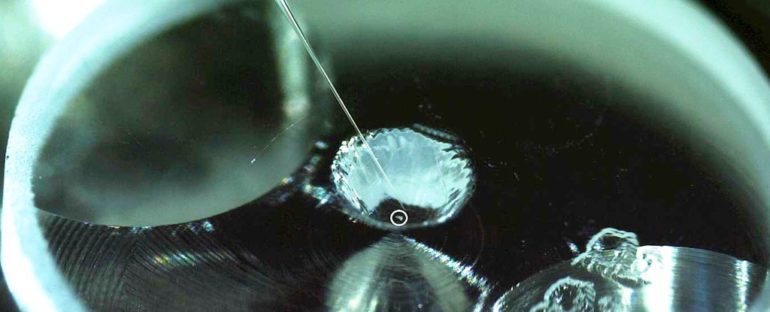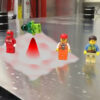Follow the twisted limbs of your family tree all the way back to its primordial origins billions of years in the past and you’ll find that we all originated from dust rich in organic chemistry.
Just where this organic dust came from has been a topic of debate for more than half a century. Now, researchers have found the first evidence of organic materials essential to life on Earth on the surface of an S-type asteroid.
An international team of researchers recently conducted an in-depth analysis on one of the particles brought back from the asteroid Itokawa by the Japanese Space Agency’s (JAXA) original Hayabusa mission back in 2010.
Most of Earth’s meteorites come from S-type asteroids like Itokawa, so knowing that it could have contained essential ingredients for life on our planet is a significant step forward in our understanding of how life-forming conditions could arise. Up until now, most research on organic material has focussed on carbon-rich (c-class) asteroids.
Looking into the sample, the team found that organic material that came from the asteroid itself has evolved over time through extreme conditions – incorporating water and organic matter from other sources.
This is similar to the process that happened on Earth, and helps us better understand how the earliest forms of terrestrial biochemistry might simply be an extension of the chemistry taking place inside many asteroids.
“These findings are really exciting as they reveal complex details of an asteroid’s history and how its evolution pathway is so similar to that of the prebiotic Earth,” says earth scientist Queenie Chan from the Royal Holloway University of London.
Evolutionary models can take us back some 3.5 billion years to a time when life was little more than competing sequences of nucleic acid.
Step back any further and we’re forced to consider how elements like hydrogen, oxygen, nitrogen, and carbon might join to form amazingly complex molecules capable of self-arranging into stuff that behaves like RNA, proteins, and fatty acids.
In the 1950s, as researchers were first considering the prickly question of how simpler ingredients might spontaneously cook up an organic soup, experiments showed conditions on Earth’s surface might do a sufficient job.
Nearly seven decades later, our focus has turned to the slow and steady chemical processes inside the very rocks that aggregated into worlds like ours.
Evidence isn’t hard to come by. It’s now clear a steady rain of rock and ice billions of years ago could have delivered molecules of cyanide, the sugar ribose, and even amino acids – along with a generous donation of water – onto Earth’s surface.
But the degree to which the chemistry of meteorites could have been contaminated by things on Earth leaves some room for doubt.
Since Hayabusa’s return a decade ago, more than 900 particles of pristine asteroid dirt taken from its payload have been separated and stored in a JAXA clean room.
Fewer than 10 have been studied for signs of organic chemistry, but all of them were found to contain molecules predominantly made up of carbon.
Itokawa is what’s referred to as a stony (or siliceous) class of asteroid, or s-class. Following early studies on its material, it’s also believed to be an ordinary chondrite – a relatively unmodified type of space rock representing a more primitive state of the inner Solar System.
Given these types of asteroids make up a good chunk of the minerals smashing into our planet, and aren’t generally thought to contain much in the way of organic chemistry, those early findings were intriguing, to say the least.
Chan and her colleagues took just one of these grains of dust, a 30 micrometre wide particle shaped a little like the continent of South America, and conducted a detailed analysis of its make-up, including a study of its water contents.
They found a rich variety of carbonaceous compounds, including signs of disordered polyaromatic molecules of a clearly extraterrestrial origin, and structures of graphite.
“After being studied in great detail by an international team of researchers, our analysis of a single grain, nicknamed ‘Amazon’, has preserved both primitive (unheated) and processed (heated) organic matter within ten microns (a thousandth of a centimetre) of distance,” says Chan.
“The organic matter that has been heated indicates that the asteroid had been heated to over 600°C in the past. The presence of unheated organic matter very close to it, means that the in-fall of primitive organics arrived on the surface of Itokawa after the asteroid had cooled down.”
Itokawa has had an exciting history for a rock that has nothing better to do than float idly around the Sun for a few billion years, having been modified with a good baking, dehydrated, then rehydrated with a new coating of fresh material.
While its story isn’t quite as exciting as our own planet’s history, the asteroid’s activity does describe the cooking of organic material in space as a complex process, and isn’t limited to carbon-rich asteroids.
Late last year, Hayabusa2 returned with a sample of a c-class, near-Earth asteroid named Ryugu. Comparing the contents of its payload with those of its predecessor will no doubt contribute even more knowledge of how organic chemistry evolves in space.
The question of life’s origins and its seeming uniqueness on Earth is one that we’ll be seeking answers to for a long time to come. But every new discovery is pointing to a story that stretches far beyond the safe, warm puddles our newborn planet.
This research was published in Scientific Reports.



